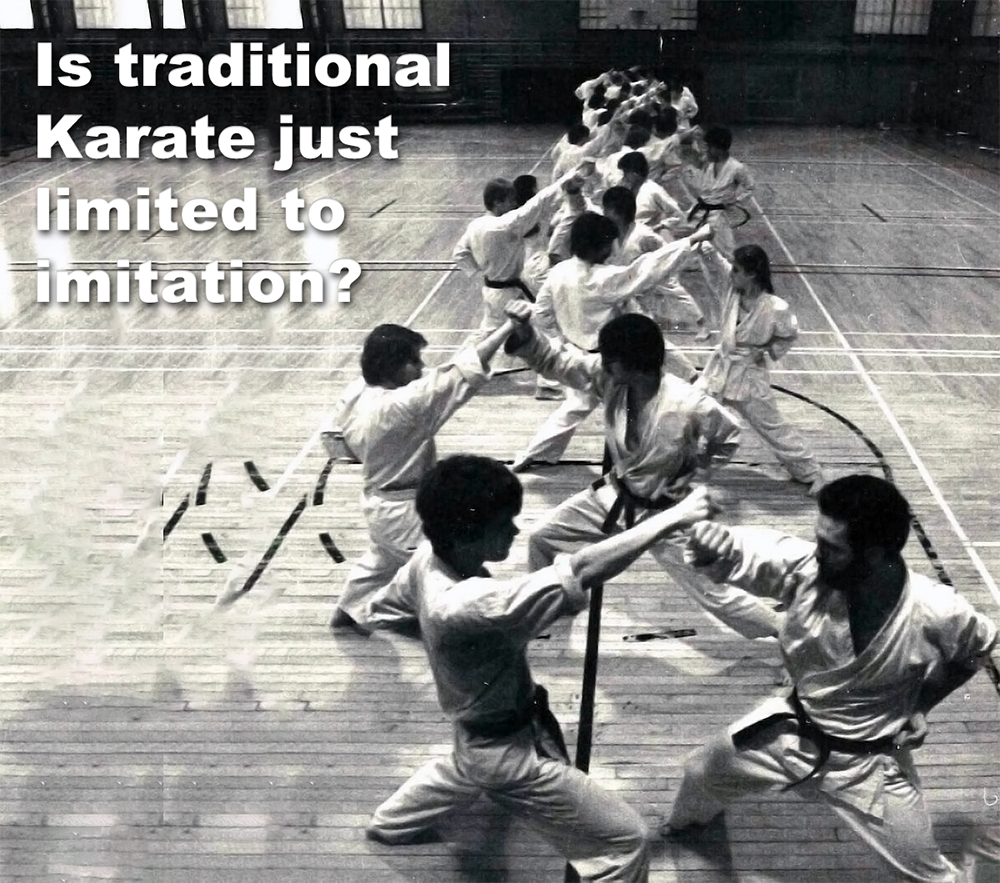
Is traditional Karate just limited to imitation?
Posted by ADAM CARTER on AUG 1, 2022

Is traditional Karate just limited to imitation?
Change is the only constant in life and yet, it is the one thing we tend to resist the most, especially so when this constant is deemed to be traditional.
Okinawa is differentiated from the rest of Japan by its individual history and distinct cultural practices. One of the most recognizable products of Okinawan culture is of course karate. Not simply a martial art but also a cultural practice inscribed with relationships and ideas inherited from wider Okinawan society.
From its outset, karate was not merely the product of one nation or one culture, but rather the outcome of interactions in East Asia between groups and individuals sharing frequent and prolonged contact. An amalgamation of practices and techniques, from all corners of Asia, that were originally incorporated into the Okinawan art of ‘Te’.
For me traditional karate is primarily a method of self-defense handed down from generation to generation. It is a link with the past and tends to not only be a collection of techniques but also general principles of movement, and established practices or standards that have evolved from earlier art forms. It reveals a respect for its roots and for the cultural identity of the art.
The word traditional is often confused with being “static” or “unchanging”, or sometimes viewed as “sacrilege” or “heresy” if changed. However, this is furthest from the truth, as all traditions including karate, have evolved and continue to evolve naturally from their earlier forms, leaving practitioners of today to take over the mantle of “tradition”.
Tradition for me implies adaptation and growth with continuity to the past. But if there is no room for that adaptation and growth, then we are not talking about tradition, but about imitation.
And imitation has shown us highly dysfunctional practices being passed off as “original,” “authentic” and “effective!” Moreover, if for some reason, the practitioner was incapable of getting these traditional techniques and practices to work, then it was deemed the learners fault, based upon their own lack of understanding, or an inability to perform at the required level of competency.
How many times have you learned a technique or kata but remained completely in the dark with regards to its defensive application? Or been taught something that just does not make practical sense?
Tradition is NOT about preserving the ashes of those gone before us, nor blindly following the masters of old, but rather about continuing to seek out and improve that which the pioneers sought themselves.
Practicing the art of karate links us to its past; and by living the art we honor its heritage, which in turn, keeps this spirit alive.
It is important to remember that karate and the other arts it comprises, have a long tradition and history, and how we practice and teach it is going to shape its evolution moving forward, as today’s training methods stand to become tomorrow’s traditions.
With thanks to Patrick McCarthy 9th dan Hanshi Koryu Uchinadi
